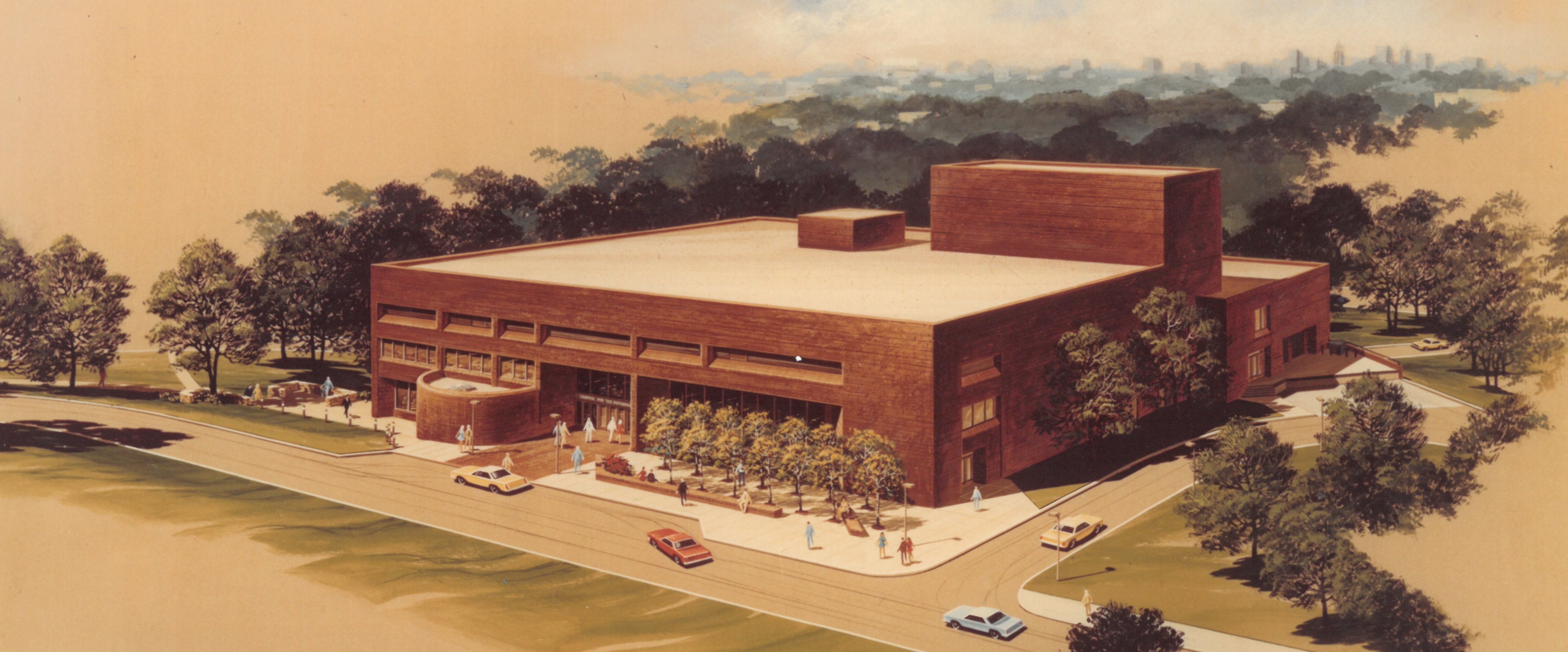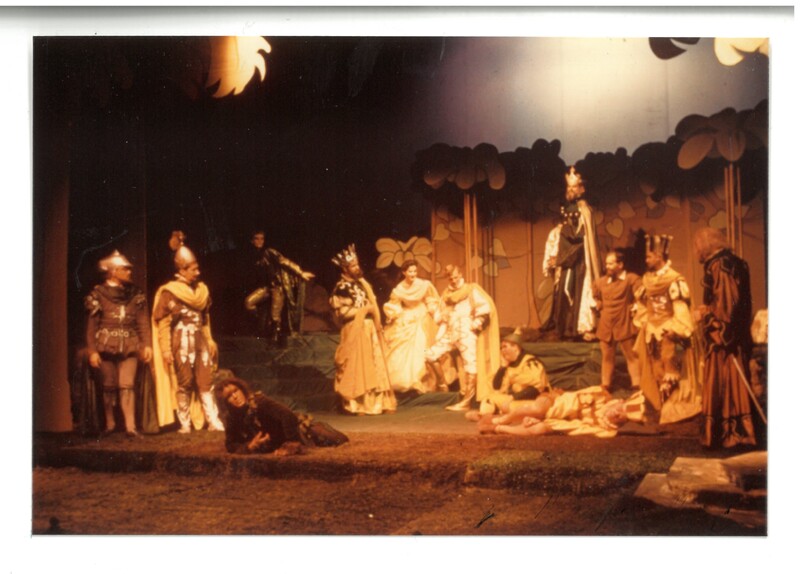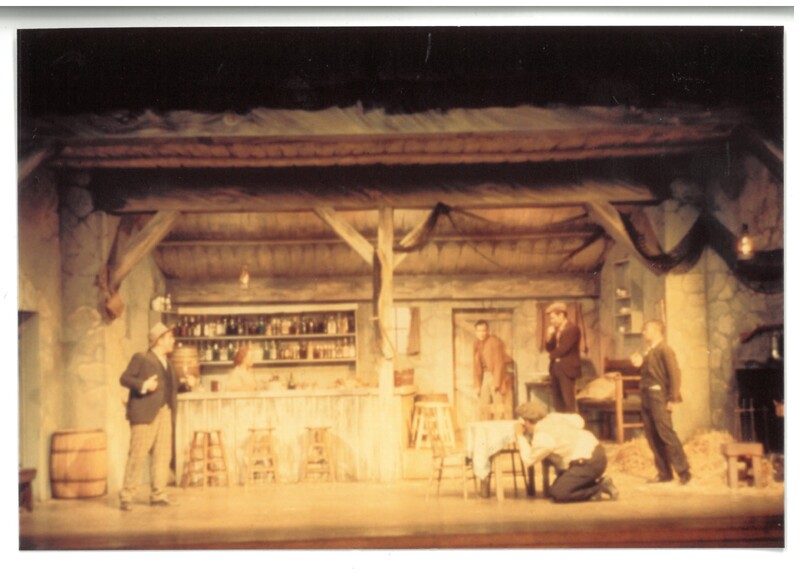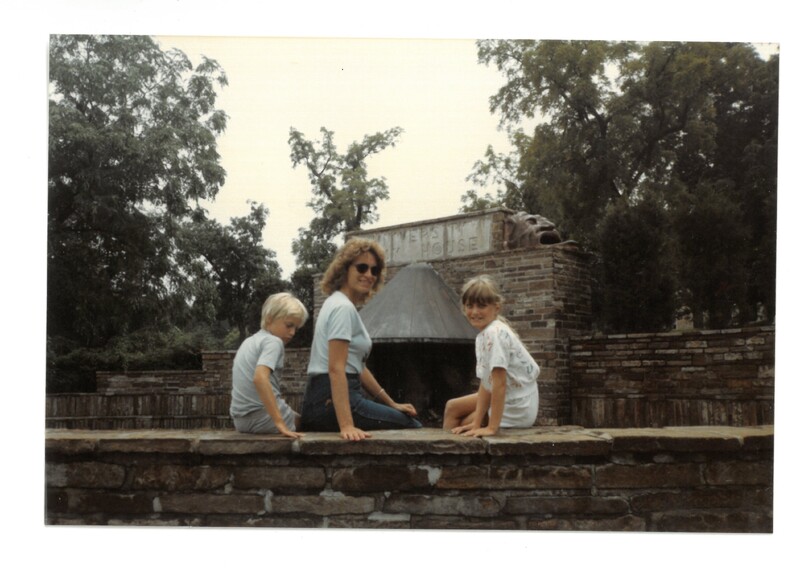The University Playhouse
I’ll do everything in my power to see the [Missouri Repertory Theatre] season open.Dr. McIlrath on the general disrepair of the theater building.
Throughout the early years of the revitalized KCU/UMKC theatre and the Missouri Repertory Theatre (MRT), productions took place at the University Playhouse. The building was initially constructed in 1943 at a military base, Camp Crowder, in Neosho, Missouri. The exact date of its construction is uncertain. An article published shortly after the building was moved to campus said that it was constructed in 1943, but a later article dated the construction at 1945.20 The building’s original purpose is also unclear. Over the years, it was described variously as originally being an “auditorium,” “an old army barracks,” or “one of two theatres constructed... at Camp Crowder.” 20, 15, 22 Regardless of its original purpose, the university purchased the building along with others for use on campus. The new buildings were especially important because KCU experienced increased enrollment after World War II, including enrollment of veterans, and became “very crowded."58
The Playhouse cost $300,000 and opened as a theatre in December of 1948 with a production of Elizabeth the Queen by Maxwell Anderson.22, 20
The University Playhouse, which was initially built to last only around 10 years, was ultimately in use for 34 years. Even when it was new to the KCU campus, there were some concerns regarding its condition. In 1949 students produced a comedy skit wherein they joked that it was remarkable that the building “is standing without the aid of ivy."17 By the 1960s it was beginning to show signs of deterioration and overextended use.
In 1963, before two large events planned for the Playhouse, Dr. McIlrath listed a number of necessary repairs, which reflect the general condition of the building. There was an “unsightly unpainted area” on the wall, the stage paint had “nicks,” the floors were “seriously in need of sanding and varnishing,” and “two of the lobby doors (were) practically inoperable."31 In another letter around a year later, Dr. McIlrath again requested repairs, noting that the lightboard was at least sixteen years old, the floors had not been sanded and varnished for ten years, and the offices had not been painted for eight years.42
Since UMKC brought the Playhouse to campus, they had inspected it for safety every year.8 In 1977, UMKC hired Stevson-Hall & Wade, Inc. as consulting engineers to inspect the Playhouse. They discovered that the building's trusses were “badly cracked and weakened.”54, 8
Since the Playhouse was unsafe to enter, UMKC officials formally closed the building on March 31, 1977. The MRT and the UMKC Theater Department were both displaced with little notice.
Two performances of the operetta Don Pasquale by Gaetano Donizetti and Giovanni Ruffino, as well as an upcoming production, Under Milkwood by Dylan Thomas, had to be cancelled.54 A UMKC Experimental Theater production, The Butterfly Ball by Ron Schaumburg, was moved to Pierson Hall.57 However, a longer-term solution was vital.
At that time, Dr. McIlrath said, “I’ll do everything in my power to see the [Missouri Repertory Theatre] season open.”8 Various venues served as theatres for a time. For example, the academic productions took place at the Theatre Workshop, the home of an “experimental workshop group,” and in the Sedgwick Theater at Rockhurst College.55 Ultimately, the J.C. Nichols School and the Danciger Auditorium at the Jewish Community Center hosted the MRT and the UMKC Theatre Department for around a year.
The J.C. Nichols School, now Academie Lafayette, was eighteen blocks away from the UMKC campus and had been recently vacated in the spring of 1978.22 After “over a year and countless applications,” UMKC arranged to lease the building until the summer of 1979.44 The academic theatre and MRT occupied the classrooms and auditorium for around a year, including the entire 1978-1979 theatre season. The academic productions took place in the school auditorium (after a renovated stage was added) and the MRT productions took place at Danciger Auditorium.
Initially, Dr. McIlrath and the other UMKC and theatre officials considered a number of long-term options for the UMKC Theatre Department and MRT.
One option was to fully renovate the University Playhouse. However, according to Claiborne A. Harper, the UMKC Business Officer, the “minimum repairs” to make the Playhouse safe could cost at least $50,000, and theatre faculty and students wanted a more expensive “complete renovation." Another option was to build a completely new building specifically for student productions, which “would cost $2 million to $3 million." The third option, which the university ultimately chose, was to incorporate an academic theatre into what is now the James C. Olsen Performing Arts Center. The building, referred to at the time as the Center for the Performing Arts or the Performing Arts Center (PAC), was under construction when the Playhouse was condemned.9 By incorporating the academic theatre into the new building, the UMKC Theatre Department was only displaced for a year, and the new building would become the permanent home for both the UMKC academic theatre and the Missouri Rep.
Ultimately, the demolition of the University Playhouse began in December 1978. Today, the only physical remnant of the University Playhouse is its patio and fireplace, topped by ceramic comedy and tragedy masks, located on the south side of the Miller Nichols Library. This area originally provided an outdoor lobby for the theatre and today provides an outdoor study space for UMKC students.





